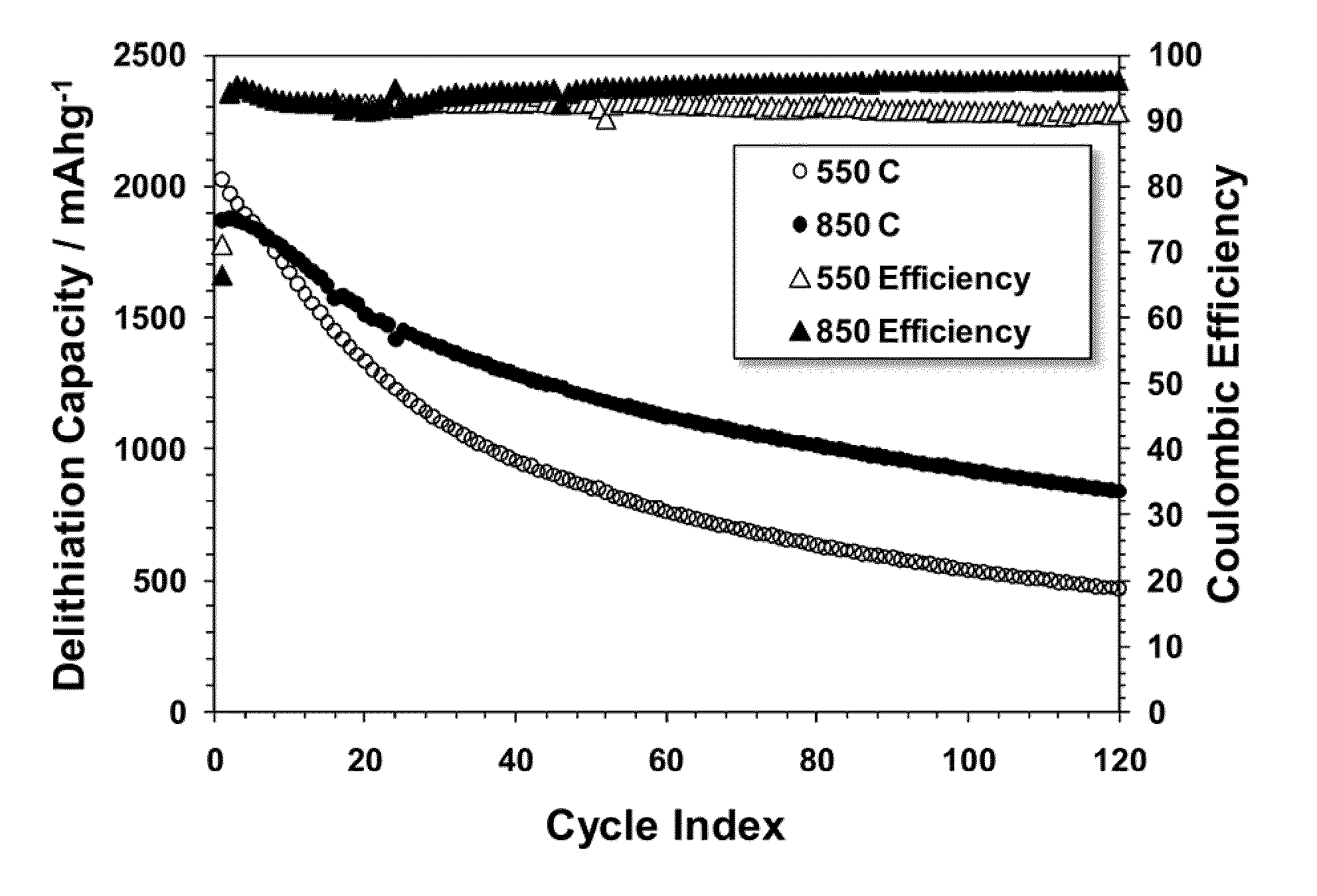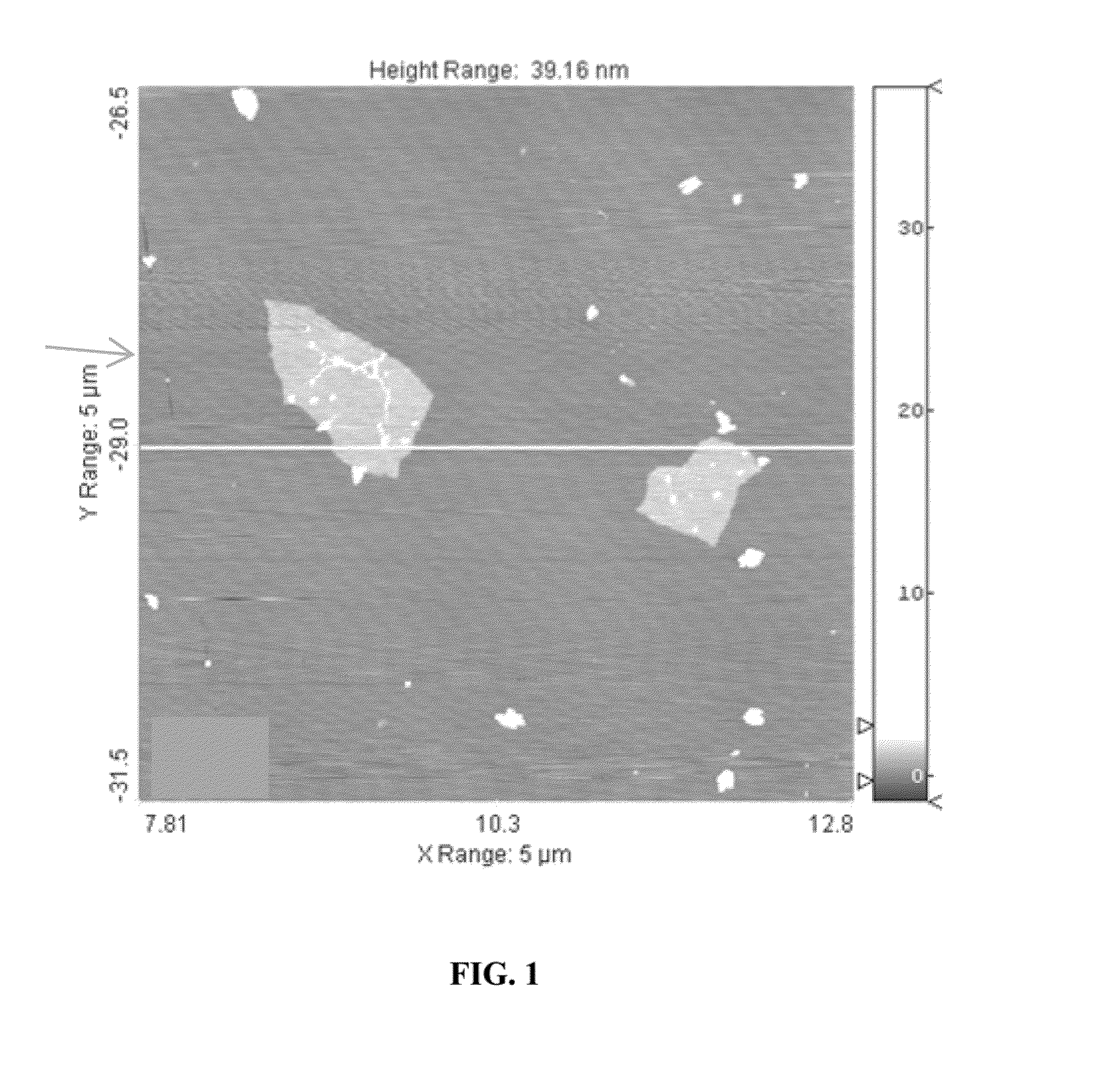Electrode material comprising graphene composite materials in a graphite network formed from reconstituted graphene sheets
a graphene composite material and graphene technology, applied in the direction of carbon-silicon compound conductors, cell components, conductors, etc., can solve the problems of loss of electrical contact of some si fragments, insatiable use of alternative eas, and inability to meet the requirements of electrical contact, etc., to achieve minimal storage capacity, high storage capacity, and add weight to the electrode
- Summary
- Abstract
- Description
- Claims
- Application Information
AI Technical Summary
Benefits of technology
Problems solved by technology
Method used
Image
Examples
example
[0035]This example demonstrates stable performance in maintaining storage capacity against fading with cycling of graphite network / graphene-silicon nanoparticles composites for the Li ion negative electrode. This example describes composites of Si nanoparticles highly dispersed between graphene sheets, and supported by a 3-D network of graphite regions formed by reconstituting regions of graphene stacks. An electrode with a storage capacity higher than 2200 mAh / g that decreased by 0.16% or less per cycle after 50 cycles, and by 0.5% or less per cycle after 200 cycles, was prepared.
Preparation of Graphite Oxide:
[0036]Graphite oxide (GO) was synthesized from flake graphite (Asbury Carbons, 230U Grade, High Carbon Natural Graphite 99+) by a modified Hummers method originally reported by Kovtyukhova et al. (N. I. Kovtyukhova, P. J. Ollivier, B. R. Martin, T. E. Mallouk, S. A. Chizhik, E. V. Buzaneva and A. D. Gorchinskiy, Chem. Mater., 1999, 11, 771-778), in which pre-oxidation of graph...
PUM
| Property | Measurement | Unit |
|---|---|---|
| thickness | aaaaa | aaaaa |
| temperature | aaaaa | aaaaa |
| size | aaaaa | aaaaa |
Abstract
Description
Claims
Application Information
 Login to View More
Login to View More - R&D
- Intellectual Property
- Life Sciences
- Materials
- Tech Scout
- Unparalleled Data Quality
- Higher Quality Content
- 60% Fewer Hallucinations
Browse by: Latest US Patents, China's latest patents, Technical Efficacy Thesaurus, Application Domain, Technology Topic, Popular Technical Reports.
© 2025 PatSnap. All rights reserved.Legal|Privacy policy|Modern Slavery Act Transparency Statement|Sitemap|About US| Contact US: help@patsnap.com



